If you’re searching for a unique fruit tree to add charm and flavor to your home orchard, consider the beautiful and aromatic quince. Though lesser-known than apples or pears, quince trees produce delightfully fragrant, pear-shaped fruits used in jellies, jams, and desserts. The good news is — quince trees are relatively easy to grow in many parts of the USA, especially in temperate and warm climates.
In this detailed guide, we’ll cover everything you need to know about how to grow quince trees in the USA — from selecting the right variety to planting, caring, and harvesting your very own quince fruits.
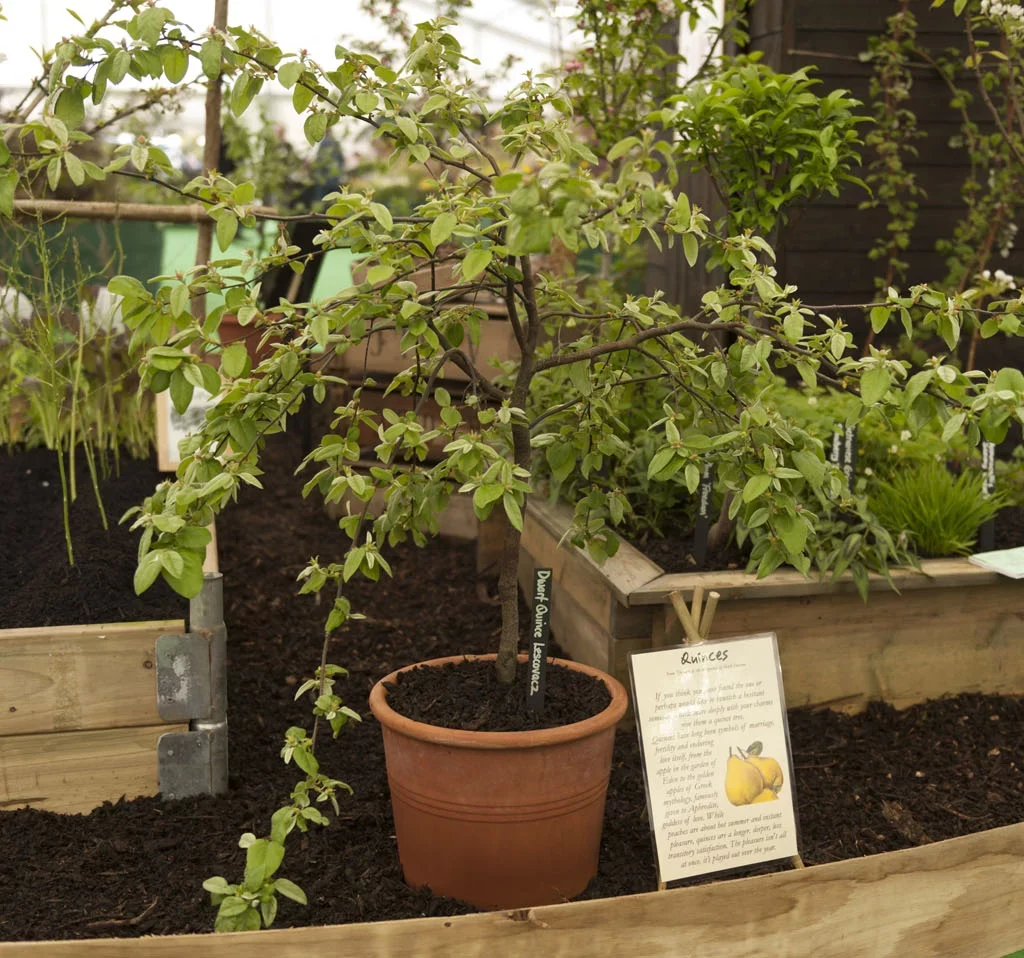
What is a Quince Tree?
The quince tree (Cydonia oblonga) is a deciduous fruit tree native to the Caucasus and parts of Southwest Asia. It belongs to the Rosaceae family, making it a relative of apples and pears. Quince trees are known for their beautiful, pale-pink blossoms in spring and golden-yellow fruits in late summer to fall.
Though the fruit is usually too hard and astringent to eat raw, it transforms into a fragrant, amber-hued delight when cooked — perfect for preserves, pies, syrups, and even savory dishes.
Why Grow Quince Trees?
Besides their culinary uses, quince trees offer several advantages:
- Attractive ornamental value with lush green leaves and delicate pink blooms.
- Low maintenance needs compared to other fruit trees.
- Self-pollinating, meaning you usually don’t need multiple trees for fruit production.
- Long lifespan, often bearing fruit for decades when properly cared for.
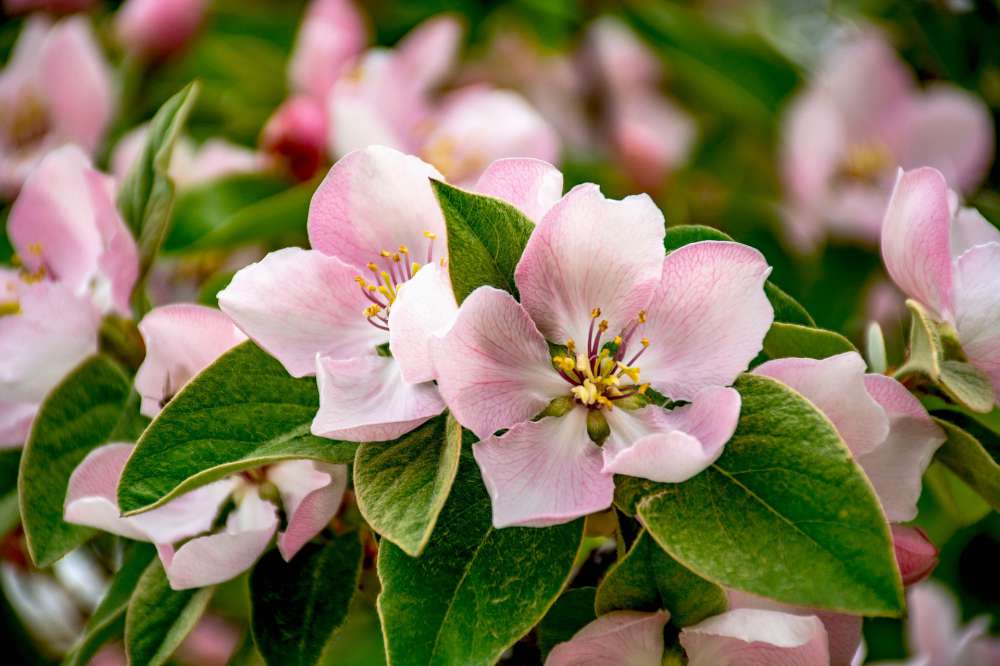
Best Quince Varieties for the USA
While quince is relatively adaptable, choosing a variety suited to your climate ensures success. Popular cultivars for American gardens include:
- ‘Smyrna’: One of the most common varieties, produces large, aromatic fruits ideal for preserves.
- ‘Pineapple’: Known for its pineapple-like fragrance and smooth-textured fruits.
- ‘Rich’s Smyrna’: Hardy and dependable, suitable for many regions.
- ‘Orange’: A reliable variety with golden-yellow fruits and high yields.
If you live in a colder USDA zone, look for cold-hardy types and consider planting in a sheltered location.
Ideal Growing Conditions for Quince Trees
To ensure healthy growth and abundant harvests, it’s important to provide your quince tree with the right growing environment:
Sunlight
Quince trees thrive in full sun. Aim for at least 6-8 hours of direct sunlight daily to encourage flowering and fruiting.
Soil
Well-drained, fertile soils with a pH between 6.0 and 7.0 are ideal. Loamy soil is best, though quince can tolerate clay if it drains well.
Tip: Avoid planting in areas prone to waterlogging, as standing water can lead to root rot.
Climate
Quince trees prefer temperate to warm climates. They grow well in USDA zones 5-9, though they may need protection from harsh winter winds in colder areas.
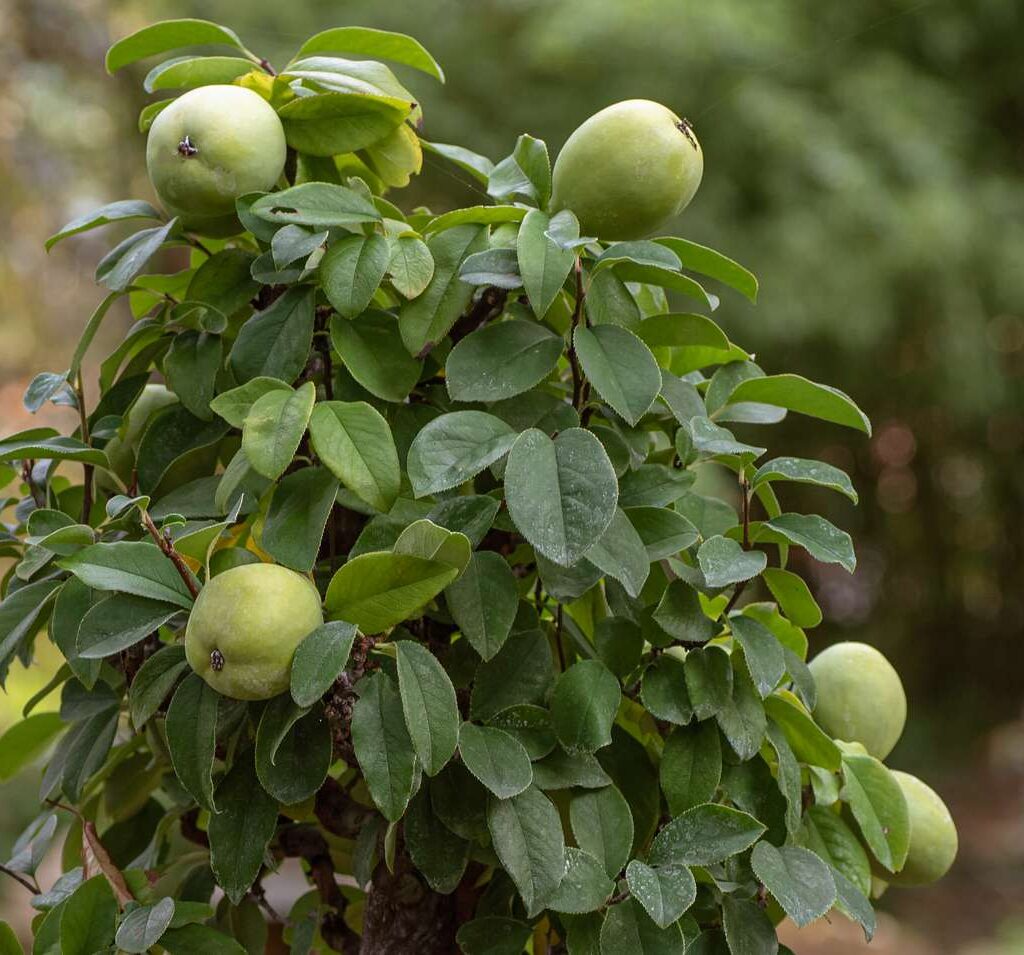
How to Plant a Quince Tree
Best Planting Time
Plant quince trees in early spring or late fall when the tree is dormant. This allows the roots to establish before active growth begins.
Step-by-Step Planting Guide
- Choose a Location: Select a sunny, sheltered spot with well-draining soil.
- Prepare the Soil: Enrich the planting site with compost or well-rotted manure to improve fertility.
- Dig a Hole: Make the hole twice as wide and just as deep as the root ball.
- Position the Tree: Place the quince tree in the hole, ensuring the graft union (swollen area near the base of the trunk) is slightly above soil level.
- Backfill: Refill the hole with soil, firming gently to eliminate air pockets.
- Water Thoroughly: Give the tree a good soak after planting.
- Mulch: Apply a 2-3 inch layer of organic mulch around the base to retain moisture and suppress weeds.
Caring for Quince Trees
Once planted, quince trees require regular care to thrive:
Watering
Keep the soil consistently moist, especially during the first year. Mature trees can tolerate short dry spells but benefit from deep watering during fruit development.
Fertilizing
Feed your quince tree in early spring using a balanced 10-10-10 fertilizer or organic compost. Avoid excessive nitrogen, as it promotes leafy growth over fruit production.
Pruning
Prune quince trees in late winter to:
- Remove dead, diseased, or crossing branches.
- Maintain an open center for better air circulation.
- Shape the tree and encourage new fruiting wood.
Pest & Disease Management
Common quince issues include:
- Fire blight: A bacterial disease causing blackened, withered branches.
- Aphids: Can distort leaves and weaken growth.
- Codling moth: Larvae burrow into fruits.
Prevention Tips:
- Remove fallen fruit and leaves.
- Use horticultural oil in early spring.
- Practice good pruning and sanitation.
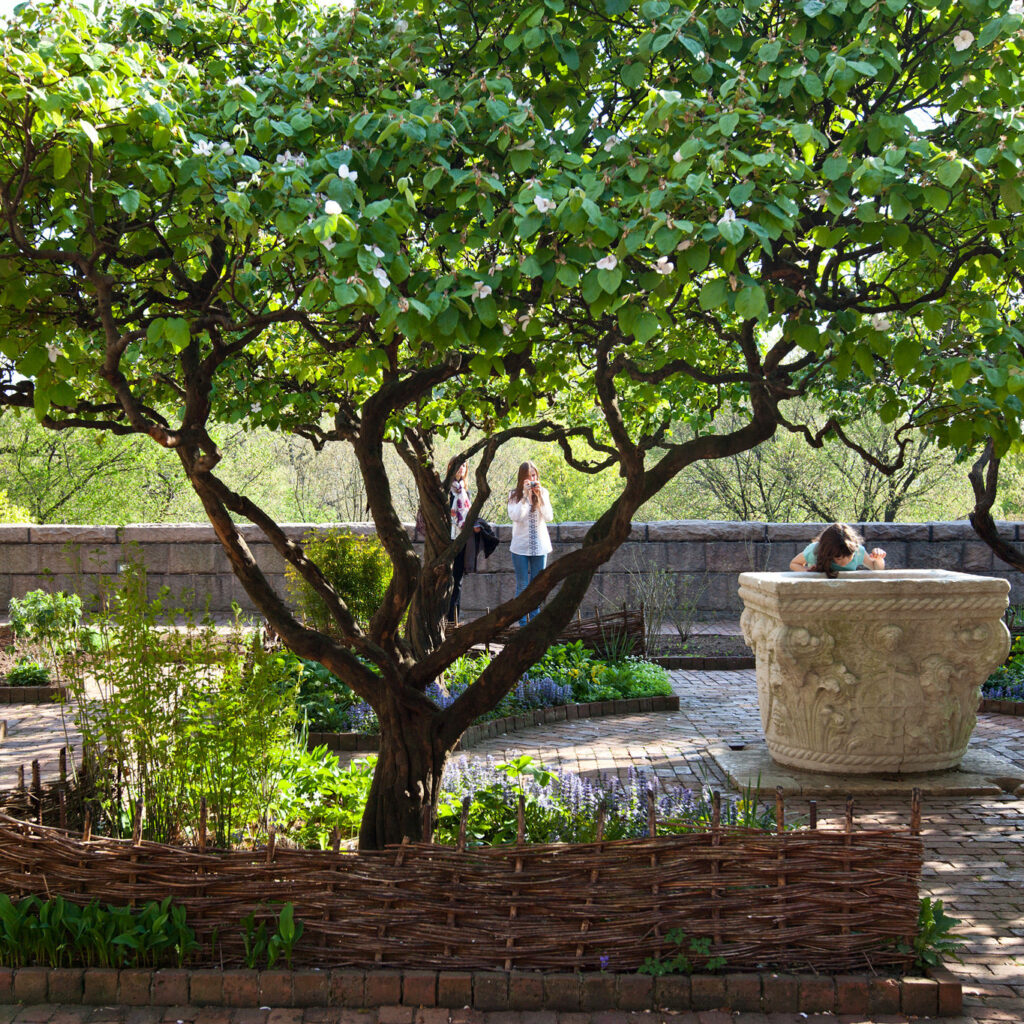
How to Harvest and Use Quince
When to Harvest
Quince fruits are typically ready in late summer to early fall when they turn from green to golden yellow and emit a sweet, floral aroma.
How to Use Quince
Since raw quince is too hard and tart, it’s best used cooked:
- Quince jelly or jam
- Poached quince
- Quince paste (membrillo) served with cheese
- Baked into tarts and pies
- Added to stews for a fragrant twist
Pro tip: Storing quince for a few weeks after harvest can mellow its flavor and increase aroma.
Propagating Quince Trees
If you’d like to grow more quince trees, you can propagate them through:
- Grafting (most reliable)
- Softwood cuttings in summer
- Root suckers from the parent tree
Seed propagation is possible but not recommended for fruiting trees, as offspring may not resemble the parent.
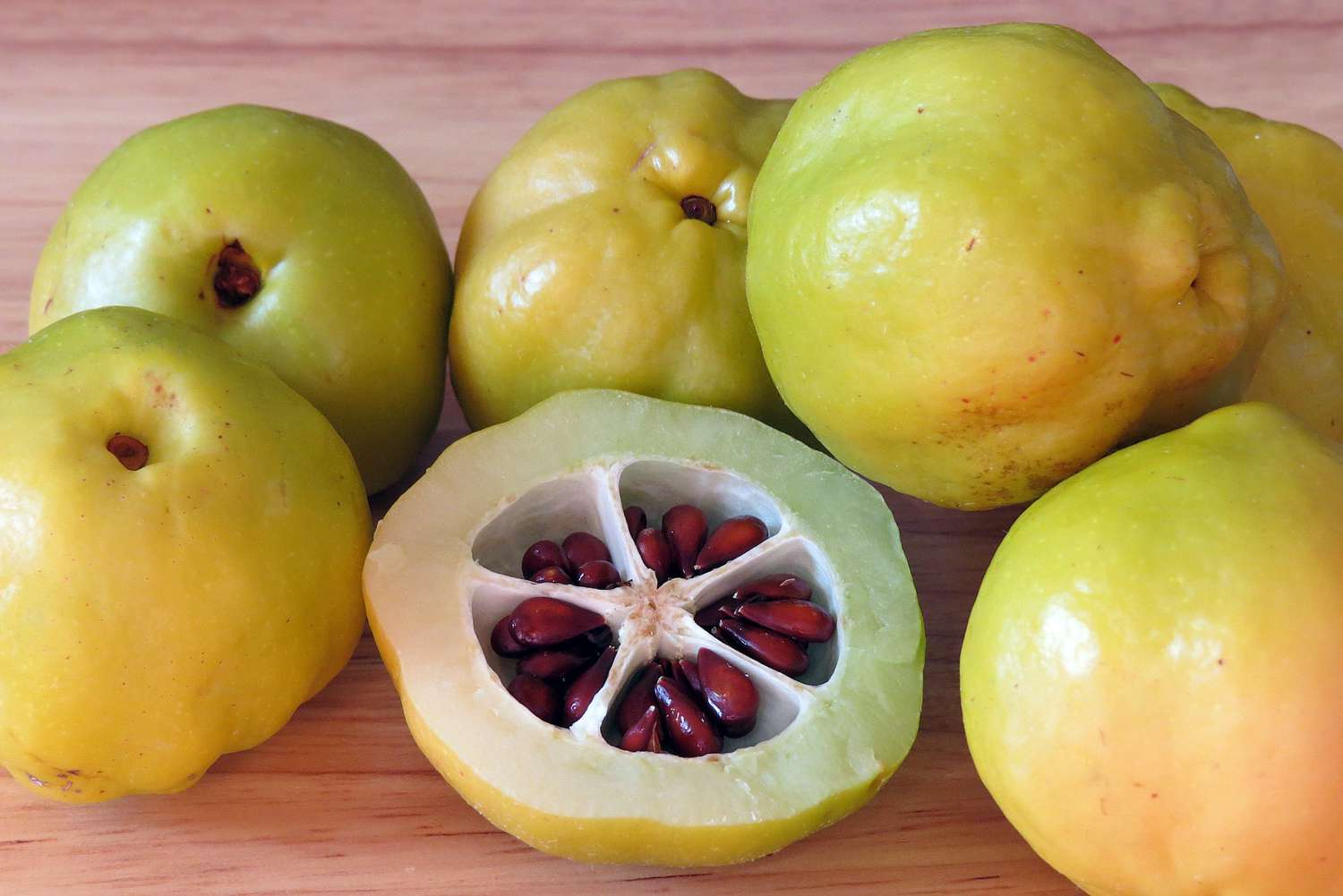
Final Thoughts
Quince trees are a rewarding addition to American home orchards, offering beauty, fragrance, and flavorful fruits perfect for preserving and cooking. With their hardy nature and relatively simple care requirements, they’re ideal for gardeners seeking something a little different from the usual apple or pear tree.
Whether you’re looking to create jars of golden quince jelly or simply enjoy a tree adorned with spring blossoms, following the guidance in this article will help you grow healthy, productive quince trees in the USA.
FAQs
Q: How long does it take for a quince tree to bear fruit?
A: Most quince trees start producing fruit 3-5 years after planting.
Q: Can quince trees tolerate frost?
A: Mature quince trees can handle light frosts, but late spring frosts may damage blossoms and reduce fruit set.
Q: Are quince fruits good for fresh eating?
A: Typically no — quince is best enjoyed cooked as it’s hard and astringent when raw.

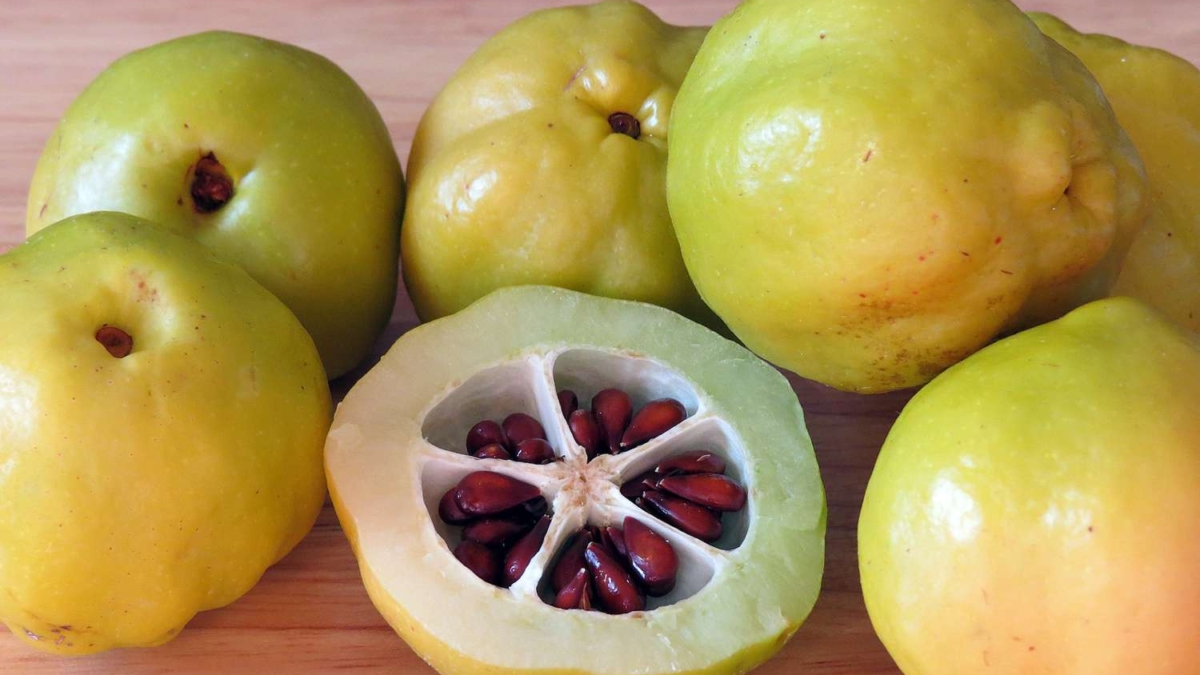




Leave A Comment